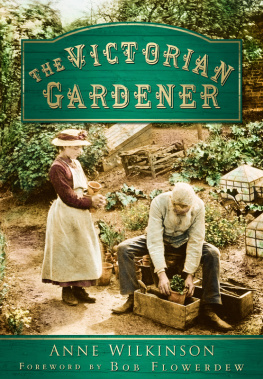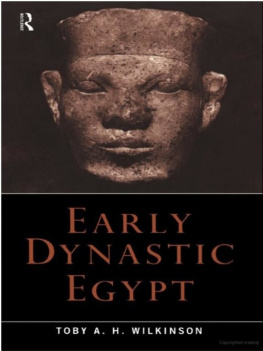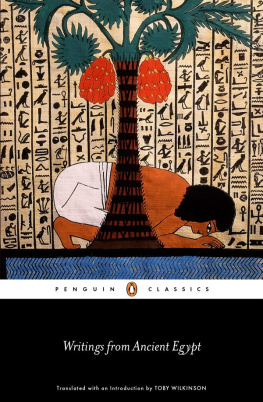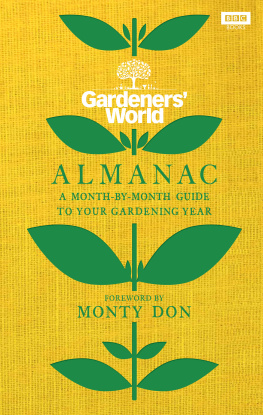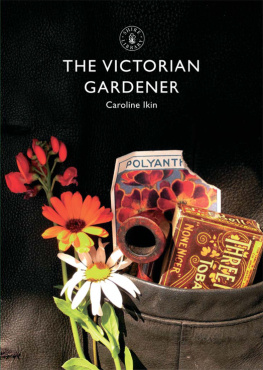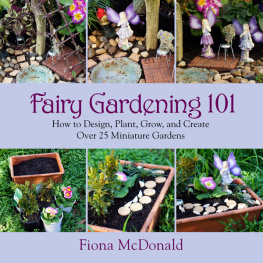THE VICTORIAN
GARDENER
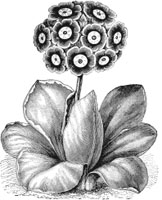
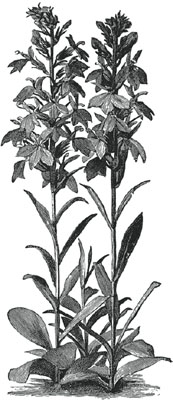
THE VICTORIAN GARDENER
ANNE WILKINSON
FOREWORD BY BOB FLOWERDEW


Front Cover: An Old Man and his Daughter Gardening (coloured) by Peter Henry Emerson (Private Collection/Bridgeman Art Library)
First published in 2006
This edition first published in 2011
The History Press
The Mill, Brimscombe Port
Stroud, Gloucestershire, GL5 2QG
www.thehistorypress.co.uk
This ebook edition first published in 2013
All rights reserved
Anne Wilkinson, 2006. 2011, 2013
The right of Anne Wilkinson to be identified as the Author of this work has been asserted in accordance with the Copyrights, Designs and Patents Act 1988.
This ebook is copyright material and must not be copied, reproduced, transferred, distributed, leased, licensed or publicly performed or used in any way except as specifically permitted in writing by the publishers, as allowed under the terms and conditions under which it was purchased or as strictly permitted by applicable copyright law. Any unauthorised distribution or use of this text may be a direct infringement of the authors and publishers rights, and those responsible may be liable in law accordingly.
EPUB ISBN 978 0 7524 9571 2
Original typesetting by The History Press

To
Richard Allfrey
19472004


Contents

List of Colour Plates
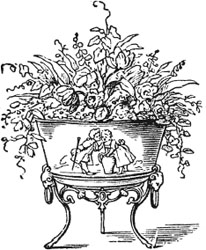
List of Black and White Illustrations
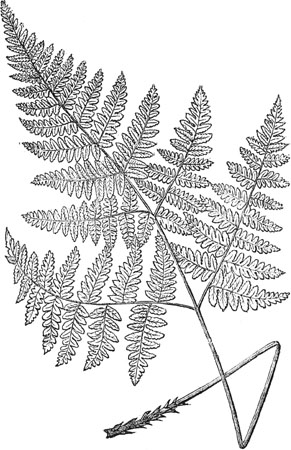
Foreword
The Victorian gardeners created our modern gardens. Little we now do horticulturally was not already being done back then, and back then it was often being done better. We probably grow fewer varieties of plants than they did, and we certainly no longer need to crop our gardens over such extended seasons, thanks to transport and refrigeration. We have other advantages, especially with modern clothing, electric heating and ventilation, legally enforced seed purity and germination rates, and health and safety regulations! But in all the basics we are continuing exactly as they did, though to our minds usually on a much more humble scale than what was so often perceived as Victorian gardening.
And that is what is so fascinating about this book: Anne Wilkinson has painstakingly collated scattered fragments of evidence to re-create the early evolution of our gardens. Not of those of the grand and stately homes and great botanical institutions, but of those gardens belonging to us, the real gardeners. Extracting pertinent snippets from the books and magazines of the time, Anne has carefully built up a cohesive history not only of how we gained gardening both as a hobby and as a profession, but also of how we gained our various sorts and types of gardens. From the early cottage and town house beginnings through to such refinements as the Water, Rose and Exotic, she traces each theme and its development. Of course I was particularly interested in the Vegetable and Fruit Gardens but was drawn in by all the other sections, especially the second part, Learning to Garden.
But let me leave you now to enjoy it all for yourself, reminding you only that this book explains how we derived our knowledge of plants and methods from the hard work and tenacity of just a few generations of far-sighted men and women. It is humbling to realise how much we owe them. As someone once said, truly, we stand on the shoulders of giants.
Bob Flowerdew
Dickleburgh
Norfolk
July 2005
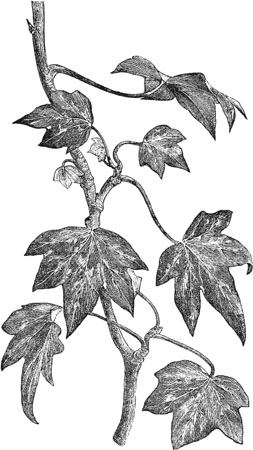
Preface
This book is a different approach to Victorian gardening. I have chosen to emphasise the work of amateur gardeners and show how they came to be the primary focus of both the retail market and horticultural publishing. Along with the main text, readers will find mini-biographies of some of the most important players in the story. Many well-known names, however, such as Loudon, Robinson, Jekyll, Paxton and Lindley, do not feature in these, as their lives have already been covered elsewhere. I have chosen to focus on lesser-known gardeners, from wealthy landowners to working people, who all had extraordinary enthusiasm and ability to persevere in their ambitions and encourage others to do the same. There are many people mentioned in the text on whom I would like to have given more information, but I looked for it in vain. They produced a book or two and then, like their gardens, they disappeared for ever. The exception is the most important amateur of all, Shirley Hibberd, on whom I have plenty more information and whose story deserves, I feel, to be told in full in a future book.
As well as the biographies and the main narrative, readers will find Tips and Comments from our Victorian gardeners, many of which are as relevant today as they were when they were written. I have also tried to give a good account of the Victorian gardening magazines, which are the key to any research on the subject, and I hope the details given in the Appendix will help writers in the future. There is much more to discover in their closely printed pages and they could be the basis of many more books and research projects. Finally, I have listed places to visit to see Victorian gardening re-created today, and a list of suppliers to help put into practice some of the ideas described in these pages.

Anne Wilkinson
Upminster
October 2005
Acknowledgements
This book began as a thesis for the Open University many years ago and I would therefore like to thank John Golby and Bill Purdue, my supervisors, for their guidance, interest and enthusiasm in steering me through the technicalities of academic research. I also value the co-operation and friendship of Julia Matheson, a fellow researcher at the OU, who was one of the few people I could discuss Victorian gardening with, knowing she would be interested.
My research took me to many corners of dusty archives and libraries and I never failed to marvel at the knowledge and interest shown by the curators. Both the Lindley Library and the British Library moved to new buildings during the time I was working in them, and I praise the ingenuity of the staff in never failing to find the requested documents in the apparent upheaval. I also became a regular customer at the Hackney Archives, whose help was invaluable, and in particular I would like to thank Isobel Watson of the Friends of Hackney Archives for her early support and encouragement. The Museum of Garden History also proved a fund of treasures, and I especially thank Philip Norman for his detailed assistance. Similarly, much quirky material waited to be discovered at the John Johnson Collection of the Bodleian Library in Oxford, whose staff were also generous with their help.

